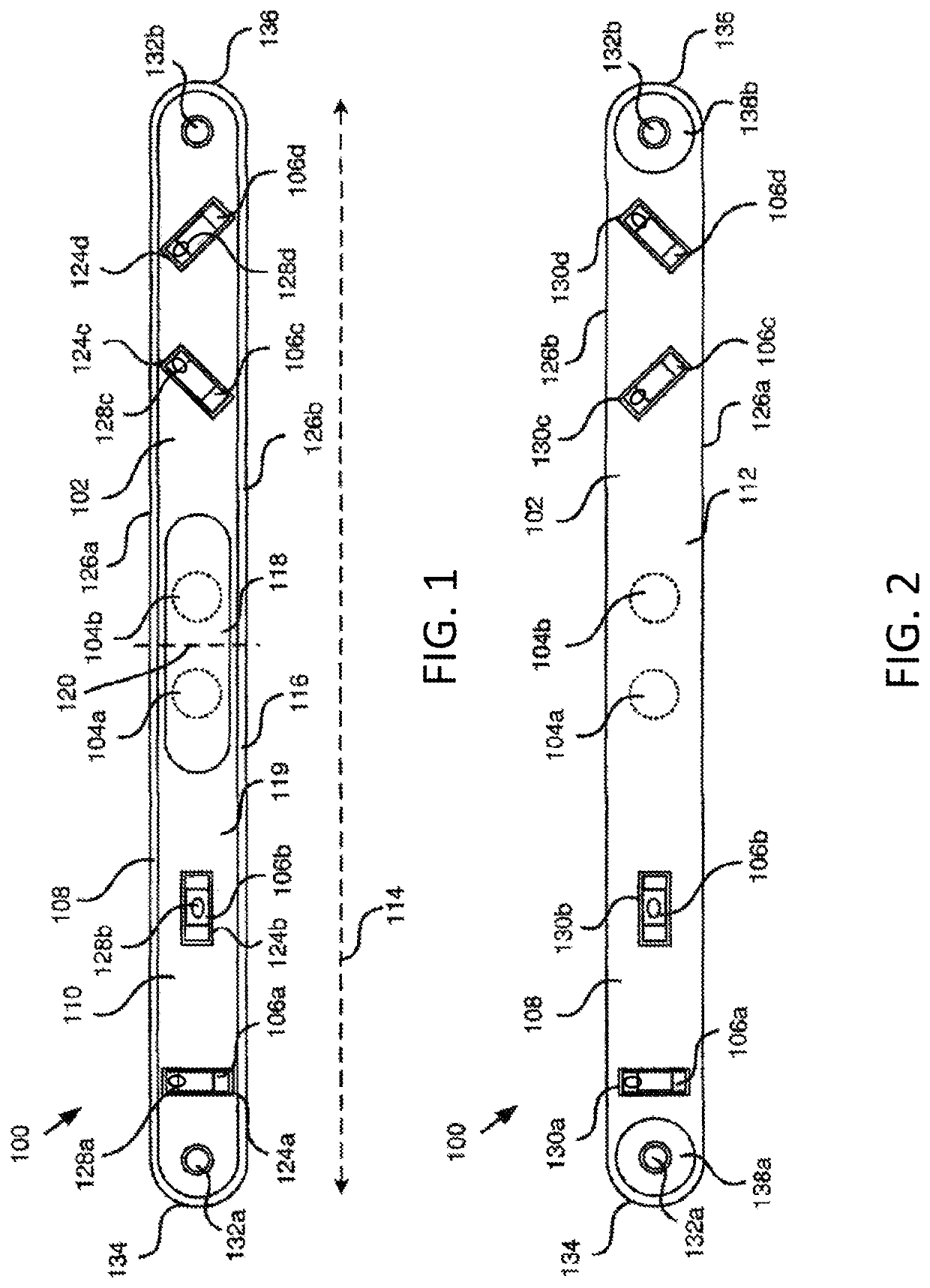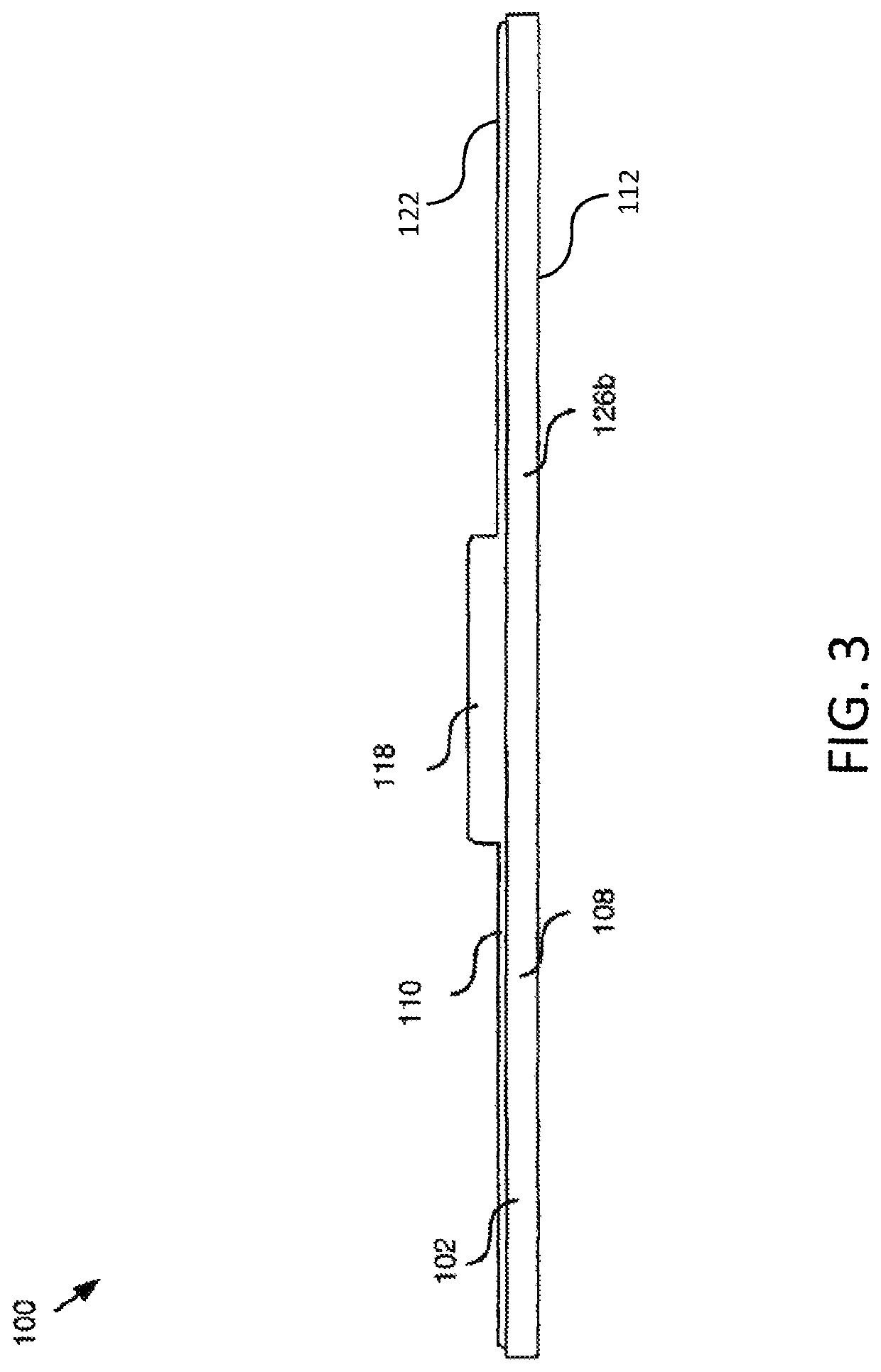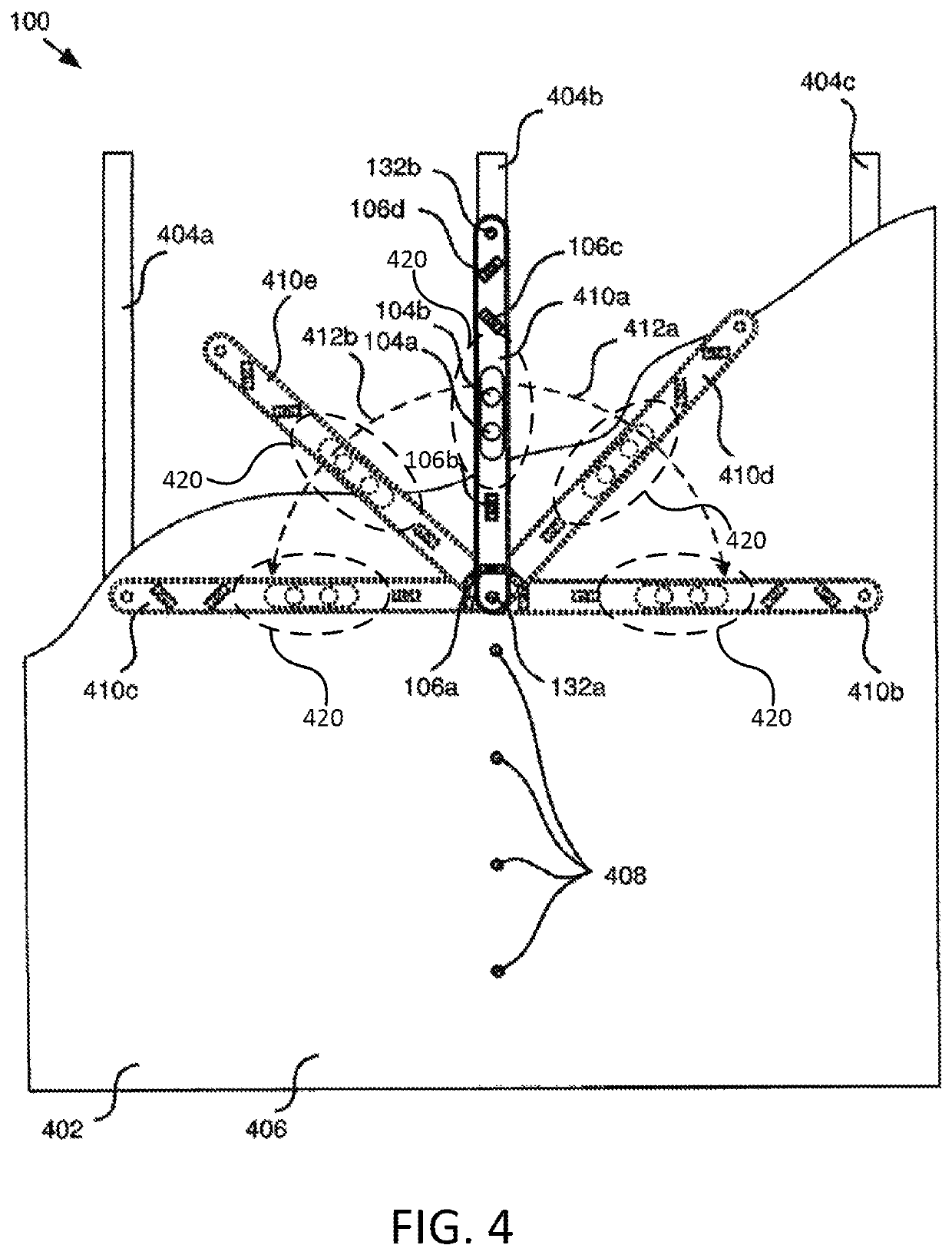Tools, systems, and methods for locating hidden studs and identifying angles on a finished wall
a technology of hidden studs and angles, applied in wave based measurement systems, instruments, reradiation, etc., can solve the problems of difficult or impossible visual identification of the location of the studs or ceiling joists supporting the drywall, and achieve the effect of quick and easy identification of the location of adjacent studs and quick and easy identification of the location
- Summary
- Abstract
- Description
- Claims
- Application Information
AI Technical Summary
Benefits of technology
Problems solved by technology
Method used
Image
Examples
embodiment 1
[0070] A tool to locate a hidden stud within a wall. The tool comprises an elongated housing having a generally planar contact surface and a viewing surface, at least one magnet, and at least one level secured to the housing such that the level is viewable from the viewing surface. The at least one magnet is secured to the housing such that a magnetic field associated with the at least one magnet extends outward from the contact surface. The magnetic field associated with the at least one magnet is sufficiently strong to cause a magnetic attraction between the tool and a metallic element in a vertical wall to maintain the tool on the vertical wall without external support.
[0071]Embodiment 2: The tool of Embodiment 1, wherein the at least one level is oriented such that when a longitudinal edge of the housing is positioned at a selected orientation, the at least one level provides a visual indication that the longitudinal edge of the housing is oriented at the selected orientation.
[0...
embodiment 15
[0084] A method of forming a tool to locate a hidden stud within a wall. The method comprises forming an elongated housing having a generally planar contact surface and a viewing surface; securing at least one level to the housing such that the at least one level is viewable from the viewing surface; and securing at least one magnet to the housing such that a magnetic field associated with the at least one magnet extends outward from the contact surface. The magnetic field associated with the at least one magnet is sufficiently strong to cause a magnetic attraction between the tool and a metallic element in a vertical wall to maintain the tool on the vertical wall without external support.
embodiment 16
[0085] The method of Embodiment 15, wherein forming an elongated housing comprises injection molding at least one portion of the elongated housing.
[0086]Embodiment 17: The method of Embodiment 15 or Embodiment 16, wherein forming an elongated housing comprises securing a base member to a cover, wherein the elongated housing comprises the base member and the cover.
[0087]Embodiment 18: The method of any of Embodiments 15 through 17, wherein securing at least one level to the housing comprises disposing the at least one level within the housing.
[0088]Embodiment 19: A method comprising applying a force to the tool of Embodiment 1 to pass the generally planar contact surface thereof horizontally along a vertical wall. When the magnetic field associated with the at least one magnet causes a magnetic attraction between the tool and a metallic element in the vertical wall, the method includes withdrawing the applied force from the tool, such that the tool remains in place adjacent the verti...
PUM
 Login to View More
Login to View More Abstract
Description
Claims
Application Information
 Login to View More
Login to View More - R&D
- Intellectual Property
- Life Sciences
- Materials
- Tech Scout
- Unparalleled Data Quality
- Higher Quality Content
- 60% Fewer Hallucinations
Browse by: Latest US Patents, China's latest patents, Technical Efficacy Thesaurus, Application Domain, Technology Topic, Popular Technical Reports.
© 2025 PatSnap. All rights reserved.Legal|Privacy policy|Modern Slavery Act Transparency Statement|Sitemap|About US| Contact US: help@patsnap.com



